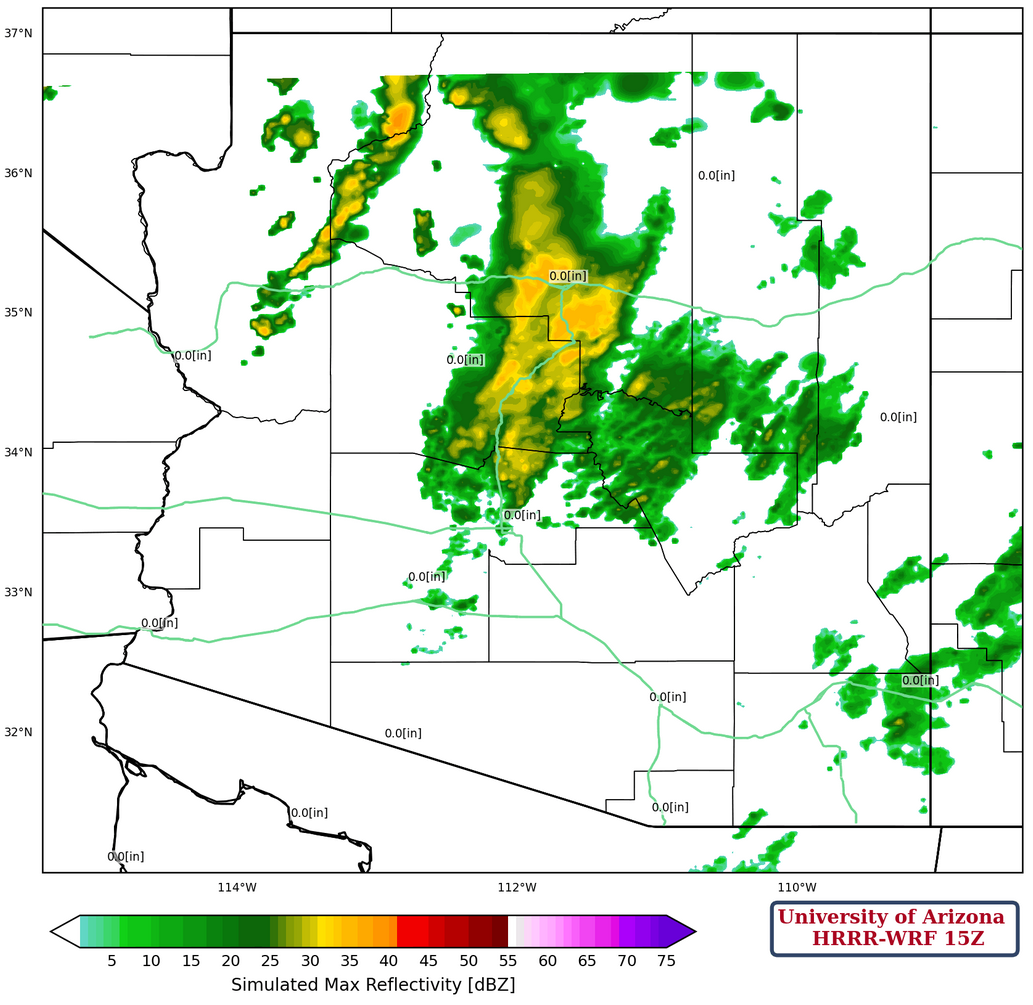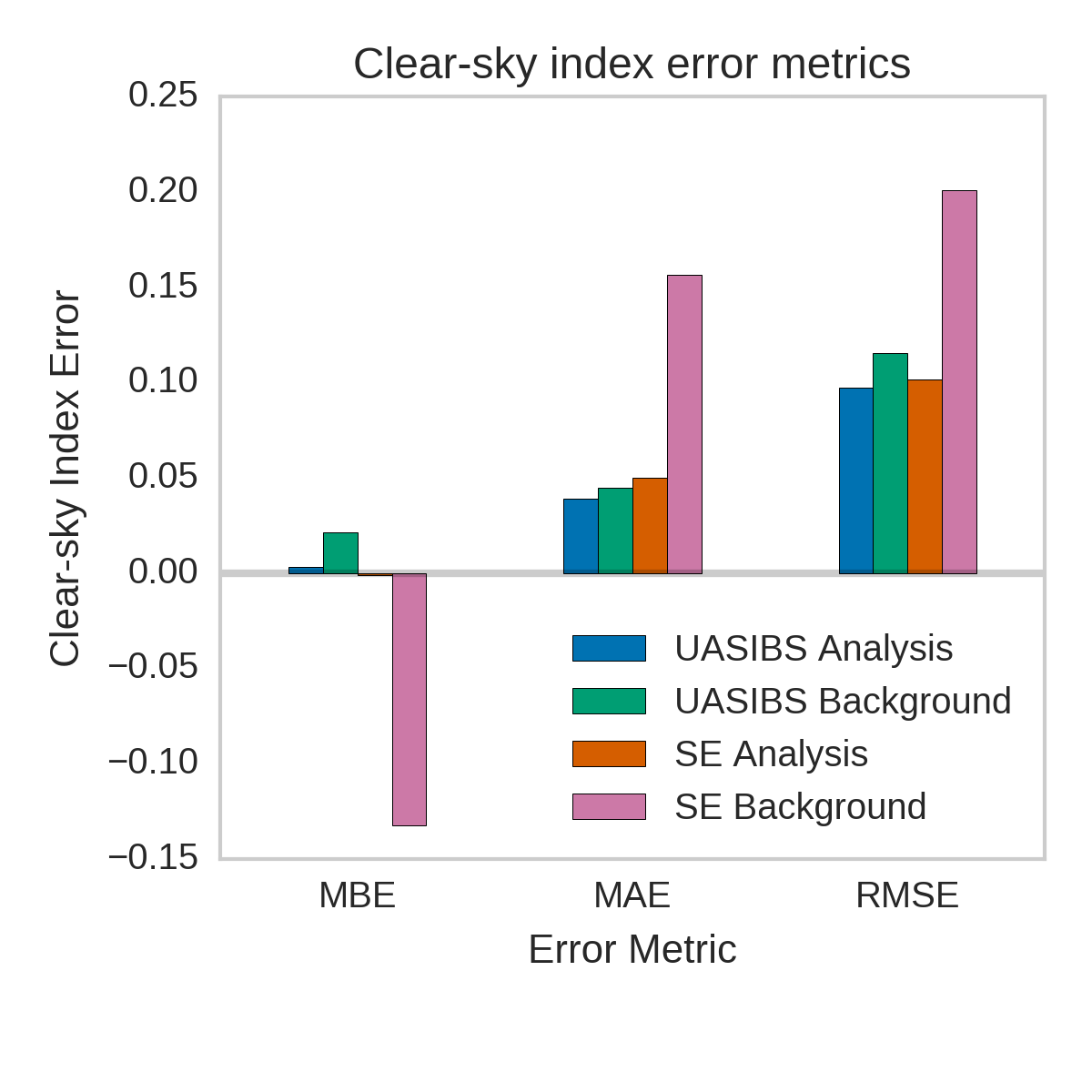
We run the UA Weather Research and Forecasting (UA WRF) model with a configuration customized for the Southwest United States. The model runs in a nested configuration with a 5.4 km outer domain grid spacing that covers the Western US and a 1.8 km inner domain that covers Arizona and New Mexico. An ensemble of runs are produced each day based on different initialization models and times. These forecasts are best suited for forecasting events 6 hours to 8 days in the future. Graphics from the most recent WRF runs can be found here.

Simulated Reflectivity forecast from UA WRF model
The Southwest Variable Energy Resource Initiative (SVERI) is a collaboration of eight electric utilities in the Southwest and the UA Power Forecasting Group. Our group collects and analyzes the power generation and load of these utilities to help understand the integrate more variable resources (solar and wind) onto the grid. The SVERI portal provided graphs of current and historical aggregates of load, conventional generators, solar power, and wind power.

Using a network of irradiance sensors and rooftop PV power data that acts as a proxy for irradiance, we produce short-term, irradiance forecasts for the Tucson area. We've shown that these forecasts have skill over persistence forecasts in the one minute to thirty minute forecast horizon zone.

Locations of irradiance sensors and rooftop sensors in Tucson, AZ
Lorenzo et. al. Solar Energy 122 1158-1169, Irradiance Forecasts based on an Irradiance Monitoring Network, Cloud Motion, and Spatial Averaging (2015). Journal link
Lonij et. al. Solar Energy 97 58-66, Intra-hour forecasts of solar power production using measurements from a network of irradiance sensors (2013).
We've also used the network of sensors in Tucson to improve satellite derived irradiance estimates via a method know as optimal interpolation. This method eliminates bias in the estimates and reduces the root mean squared error of the estimates by 50%.

Error bars for satellite estimates using two methods (UASIBS and SE) before optimal interpolation (background) and after (analysis).
Lorenzo et. al. Solar Energy 144 466-474, Optimal Interpolation of Satellite and Ground Data for Irradiance Nowcasting at City Scales (2017). Journal link, Poster